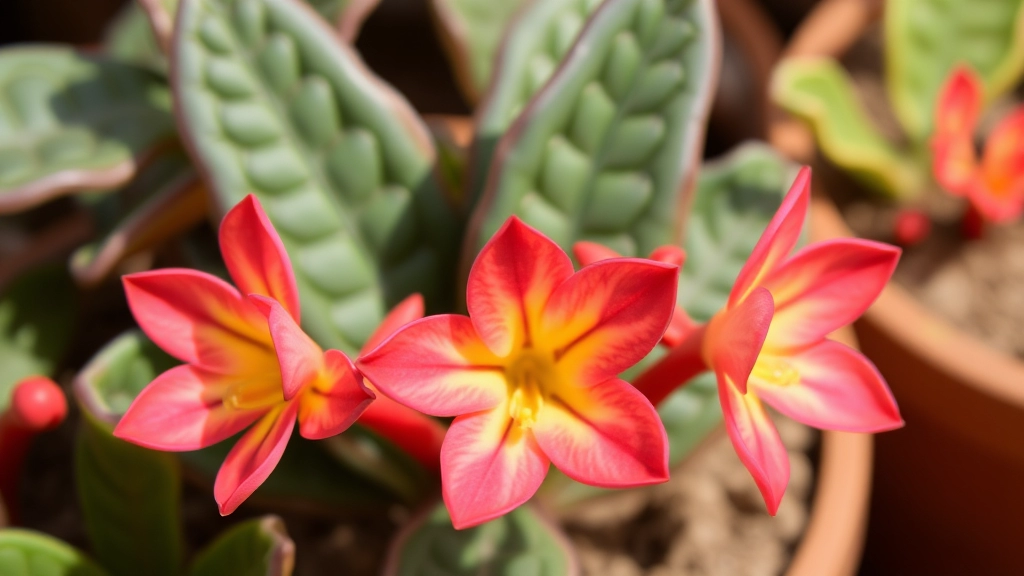Kalanchoe Sexangularis: A Succulent Enthusiast’s Delight
As an avid succulent enthusiast, I’m thrilled to introduce you to the captivating world of Kalanchoe sexangularis. This unique plant, with its geometric shape and vibrant color-changing leaves, is a true marvel of nature. Native to South Africa, it’s not just a pretty face – it’s a resilient, low-maintenance succulent that’s perfect for both novice and experienced gardeners alike.
In this comprehensive guide, we’ll explore everything from the plant’s distinctive botanical characteristics to its ideal growing conditions. We’ll delve into easy propagation methods, discuss common pests and diseases, and highlight the many benefits and uses of this versatile succulent. Whether you’re looking to add a touch of exotic beauty to your indoor space or create a drought-resistant outdoor garden, Kalanchoe sexangularis is a fantastic choice that’s sure to impress.
Overview of Kalanchoe sexangularis
Ever stumbled upon a plant that looks like it’s from another planet?
That’s Kalanchoe sexangularis for you.
This succulent’s a real head-turner, with its quirky geometric shape and vibrant colours.
Native to South Africa, it’s part of the Crassulaceae family.
But don’t let its exotic origins fool you – it’s surprisingly easy to grow.
Kalanchoe sexangularis is known for its thick, fleshy leaves arranged in a neat rosette.
The leaves? They’re a show-stopper.
Green in shade, but turn a brilliant red when exposed to full sun.
It’s like nature’s own mood ring.
This plant’s not just a pretty face, though.
It’s tough as nails, drought-resistant, and low-maintenance.
Perfect for busy plant parents or those with a not-so-green thumb.
In its natural habitat, it’s a ground cover or rock garden plant.
But it’s versatile enough to thrive in pots, making it a great indoor option too.
Whether you’re a seasoned gardener or a newbie, Kalanchoe sexangularis is a solid choice.
It’s like the Swiss Army knife of succulents – adaptable, useful, and always impressive.
Botanical Characteristics
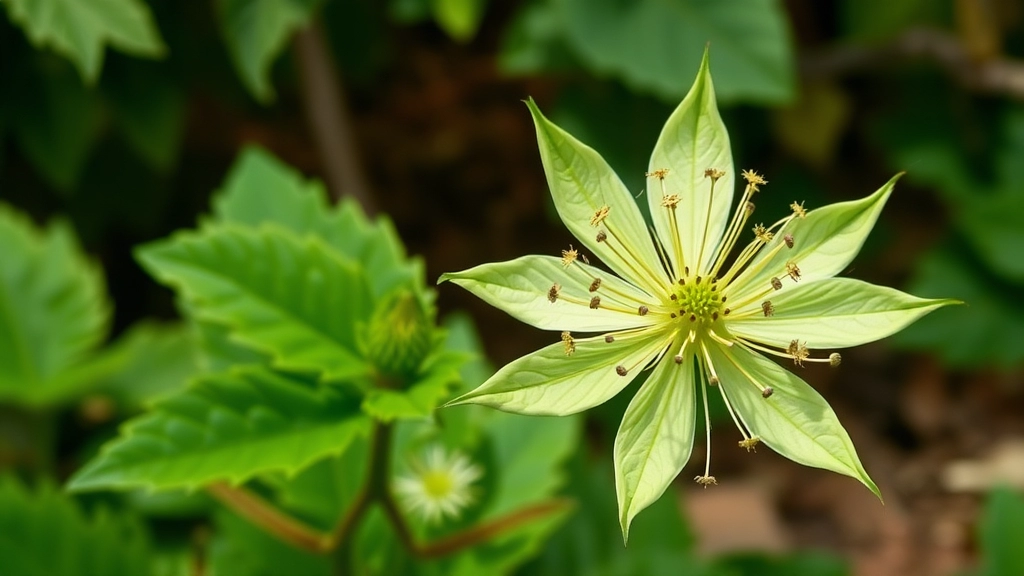
Alright, let’s dive into the nitty-gritty of Kalanchoe sexangularis. This succulent’s a real head-turner, and I’m not just saying that ’cause I’m a plant nerd.
First off, the name’s a mouthful, right? But it’s actually pretty straightforward. “Sexangularis” means six-angled, which is spot-on for this beauty’s stem shape. Clever, eh?
Now, let’s break it down:
Leaves:
- Thick and fleshy (typical succulent stuff)
- Oval to oblong shape
- Edges? They’re got a cool scalloped look
- Colour’s the kicker: green normally, but turn reddish-bronze in full sun or when stressed
Stems:
- Six-angled (duh, given the name)
- Upright growth habit
- Can get pretty tall, up to 60cm in some cases
Flowers:
- Small and tubular
- Usually yellow or orange
- Bloom in clusters at the stem tips
- Flowering time? Late winter to early spring
Size:
- Height: 30-60cm (1-2 feet)
- Spread: Similar to height, creating a nice bushy look
Root System:
- Shallow and fibrous
- Adapted for quick water uptake (smart plant, eh?)
Here’s the thing about Kalanchoe sexangularis – it’s a chameleon. The leaf colour can shift dramatically based on light exposure and stress. It’s like nature’s mood ring.
I’ve seen these plants go from lush green to deep burgundy in a matter of weeks. It’s not just pretty; it’s a survival tactic. The red pigment acts like sunscreen, protecting the plant from intense light.
One more cool bit – this plant’s got a trick up its sleeve for propagation. The leaf margins can develop tiny plantlets, ready to drop off and start new plants. It’s like it’s got its own little plant nursery built-in.
So, there you have it – Kalanchoe sexangularis in all its botanical glory. It’s not just a pretty face; it’s a smart, adaptable survivor with some nifty tricks. Whether you’re a seasoned gardener or just starting out, this plant’s got something to teach us all about resilience and adaptation. If you’re interested in other Kalanchoe species, you might want to check out the Kalanchoe luciae, which shares some similar characteristics. For those looking to expand their Kalanchoe collection, the Kalanchoe blossfeldiana is another popular choice with vibrant flowers.
Ideal Growing Conditions
Alright, let’s dive into the ideal growing conditions for Kalanchoe sexangularis.
Here’s the deal with these succulents:
Light
- They’re sun-lovers, no doubt.
- Full sun? Bring it on.
- Partial shade? They’ll manage.
- But here’s a pro tip: morning sun and afternoon shade is the sweet spot.
Temperature
- These guys are tough cookies.
- They can handle heat like a champ.
- But frost? That’s a big no-no.
- Aim for 15-30°C (59-86°F) and you’re golden.
Soil
- Well-draining is the name of the game.
- Cactus mix? Perfect.
- Regular potting soil with some sand or perlite? That works too.
- Just don’t let ’em sit in soggy soil. They hate wet feet.
Water
- Less is more with these beauties.
- Let the soil dry out between waterings.
- In winter? Cut back even more.
- Overwatering is the quickest way to kill ’em.
Humidity
- They’re not fussy.
- Average room humidity is fine.
- No need for misting or humidifiers here.
Fertilizer
- Go easy on the food.
- A balanced, diluted fertilizer during growing season.
- Skip it in winter when they’re resting.
Remember, Kalanchoe sexangularis is all about that low-maintenance life.
Give ’em these conditions, and they’ll thrive with minimal fuss.
Propagation Methods
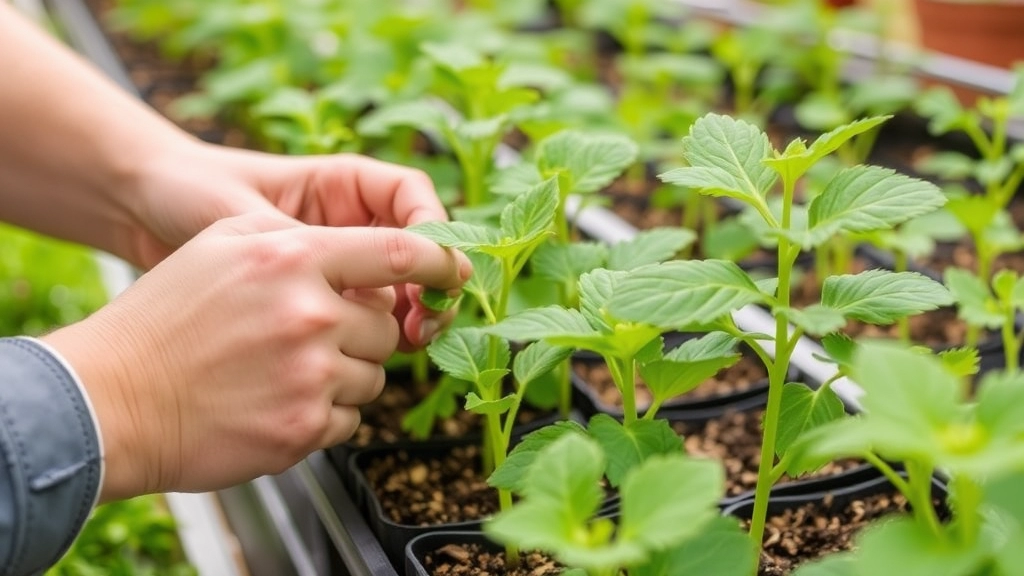
Alright, let’s dive into how we can make more of these Kalanchoe sexangularis beauties. Trust me, it’s easier than you might think!
Leaf Cuttings: The Lazy Gardener’s Dream
Here’s the deal: Kalanchoe sexangularis is like that friend who’s always ready to party. It propagates so easily, you’ll feel like a gardening genius. Let’s start with leaf cuttings:
- Snip off a healthy leaf
- Let it dry for a day or two (yeah, just leave it on the counter)
- Stick it in some well-draining soil
- Water sparingly and wait
Boom! In a few weeks, you’ll see tiny plantlets forming at the base of the leaf. It’s like magic, but it’s just good ol’ plant biology.
Stem Cuttings: For When You’re Feeling a Bit More Ambitious
If you’re thinking, “Leaf cuttings are too easy, give me a challenge,” then stem cuttings are your jam:
- Cut a stem about 4-6 inches long
- Remove lower leaves
- Let it callous over for a day
- Plant in soil or water (dealer’s choice)
- Wait for roots to develop
Pro tip: Use a rooting hormone if you want to speed things up. It’s like giving your cutting a energy drink.
Division: The “Divide and Conquer” Approach
Got a big, bushy Kalanchoe sexangularis? Time to divide and multiply:
- Carefully remove the plant from its pot
- Gently separate the roots into smaller clumps
- Replant each section in its own pot
It’s like giving your plant kids their own rooms. Everyone’s happier with more space.
Seeds: For the Patient Gardener
Look, I’ll be honest. Growing from seeds is possible, but it’s slow. Like, watching paint dry slow. But if you’re into it:
- Collect seeds from spent flowers
- Sow on top of well-draining soil
- Keep moist but not waterlogged
- Wait… and wait some more
Remember, patience is a virtue, especially in gardening.
So there you have it, folks. Propagating Kalanchoe sexangularis is a piece of cake. Whether you’re a lazy gardener or a teddy bear Kalanchoe enthusiast, there’s a method that’ll work for you. Now go forth and multiply those succulents! And if you’re looking for more variety, why not try your hand at propagating Kalanchoe tomentosa as well?
Common Pests and Diseases
Let’s chat about the bugs and baddies that might mess with your Kalanchoe sexangularis.
Pests:
- Mealybugs: These little cotton-ball lookalikes love to suck the life out of your plant.
- Spider mites: Tiny terrors that can spin webs and cause leaf damage.
- Aphids: Green or black bugs that cluster on new growth.
Diseases:
- Root rot: Overwatering’s worst nightmare. Your plant’s roots turn mushy and brown.
- Powdery mildew: White, powdery stuff on leaves. Looks like someone dusted your plant with flour.
- Leaf spot: Brown or black spots on leaves. Not a good look.
How to deal:
- Keep an eye out. Regular checks catch problems early.
- Isolate infected plants. Don’t let the trouble spread.
- Prune affected areas. Sometimes a snip is all you need.
- Use neem oil or insecticidal soap for pests. Natural and effective.
- Improve air circulation. Helps prevent fungal issues.
- Adjust watering habits. Most issues stem from too much love (aka water).
Remember, prevention is key. Keep your Kalanchoe sexangularis happy and healthy, and it’ll be less likely to attract pests or diseases.
Got any pest horror stories with your plants? We’ve all been there. The key is not to panic and tackle the problem head-on.
Benefits and Uses
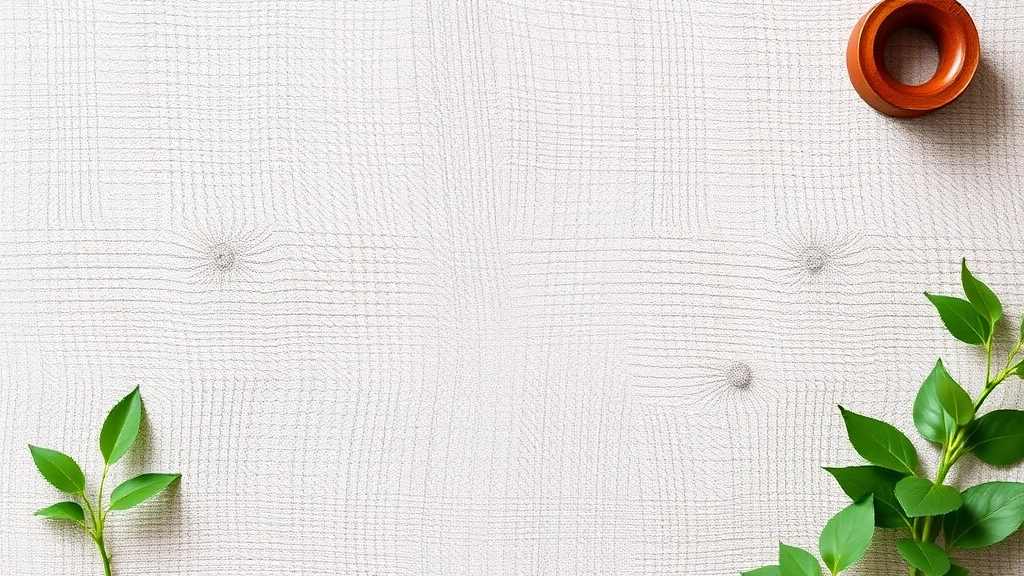
Alright, let’s dive into the good stuff – why Kalanchoe sexangularis is more than just a pretty face in your garden. Trust me, this plant’s got some tricks up its sleeve that’ll make you want to add it to your collection pronto.
Ornamental Appeal: Eye Candy for Your Space
First things first, this succulent is a looker. With its unique hexagonal stems and vibrant leaves, it’s like nature’s own geometric art piece. I’ve seen it transform dull corners into Instagram-worthy spots. Pop it in a cool pot, and boom – instant style upgrade.
Medicinal Potential: Nature’s First Aid Kit
Now, here’s where it gets interesting. Traditional medicine has been eyeing Kalanchoe sexangularis for a while. Some folks swear by its leaves for treating minor cuts and burns. While I’m not saying ditch your first aid kit, it’s pretty neat to have a plant that might help in a pinch. Speaking of medicinal uses, Kalanchoe pinnata has some fascinating medicinal applications worth exploring.
Low Maintenance: The Lazy Gardener’s Dream
Let’s be real – we’re all busy. That’s why I love this plant. It’s like the chill friend who doesn’t need constant attention. Forget to water it? No biggie. It’s tough as nails and perfect for those of us who aren’t exactly plant whisperers.
Air Purification: Your Green Lung
Like many succulents, Kalanchoe sexangularis is a bit of an air cleaner. It’s not going to replace your air purifier, but every little helps, right? Plus, it’s a lot prettier than a clunky machine.
Stress Relief: Green Therapy
There’s something about caring for plants that just melts stress away. I find myself zoning out in the best way when I’m tending to my Kalanchoe. It’s like a mini meditation session, but with dirt.
Propagation Potential: The Gift That Keeps on Giving
Here’s a pro tip: this plant propagates like a champ. You can literally grow new plants from leaf cuttings. It’s like getting free plants! I’ve started gifting these to friends, and let me tell you, it’s a hit. If you’re interested in propagation techniques, learning how to propagate Kalanchoe tomentosa can be a great starting point.
Drought Resistance: Water Bill Saver
In these times of climate change, having water-wise plants is smart. Kalanchoe sexangularis is a champ at conserving water. It’s like having a little eco-warrior in your garden.
To wrap it up, Kalanchoe sexangularis is more than just a plant – it’s a multi-tasking marvel. From sprucing up your space to potentially helping with minor scrapes, this succulent’s got your back. So, why not give it a shot? Your garden (and maybe your stress levels) will thank you.
Seasonal Care Tips for Kalanchoe sexangularis
Hey there, plant pals! Let’s chat about keeping your Kalanchoe sexangularis happy all year round.
Spring:
- Time to wake up your plant from its winter snooze
- Gradually increase watering and feeding
- Perfect time for repotting if needed
- Watch for new growth and adjust care accordingly
Summer:
- These succulents love the heat, but not scorching sun
- Water more frequently, but don’t go overboard
- Protect from intense afternoon rays
- Keep an eye out for pests – they love the warm weather too
Autumn:
- Start reducing water and fertiliser
- Move plants indoors if you live in a cold climate
- Prepare for the dormant period ahead
Winter:
- Minimal watering – once a month might be enough
- No fertiliser needed
- Keep in a bright spot, but away from cold drafts
- Watch for signs of etiolation (stretching for light)
Pro tip: Kalanchoe sexangularis is pretty chill, but it’ll thank you for adjusting its care with the seasons.
Remember, these are general guidelines. Your plant might need tweaks based on your specific environment.
Got any seasonal care tricks up your sleeve? I’d love to hear ’em!
Companion Planting
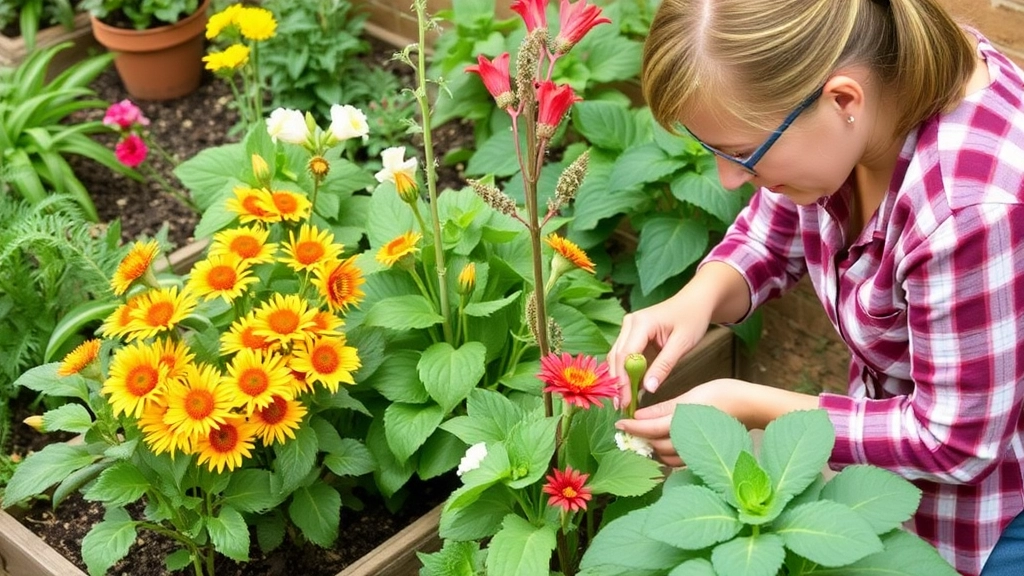
Alright, let’s chat about companion planting for Kalanchoe sexangularis. This is where the real fun begins, folks! I’ve been experimenting with this for years, and I’ve got some killer insights to share.
First off, why bother with companion planting? Simple. It’s like creating a little ecosystem in your garden. The right companions can boost growth, deter pests, and even make your Kalanchoe sexangularis look even more stunning. Who doesn’t want that?
Here’s the deal:
1. Succulents are your best bet
Kalanchoe sexangularis loves hanging out with other succulents. Think Echeveria, Sedum, or Kalanchoe blossfeldiana. They’re like the cool kids at school – they all get along and look great together.
2. Go for contrast
Want to make your Kalanchoe pop? Plant it next to something with a different texture or colour. I’ve had great success pairing it with:
- Senecio serpens (Blue Chalksticks)
- Aeonium ‘Kiwi’
- Portulaca grandiflora (Moss Rose)
3. Avoid moisture-lovers
Here’s a pro tip: steer clear of plants that need lots of water. Your Kalanchoe won’t thank you for soggy soil. So, no ferns or tropical plants, okay?
4. Think vertical
Kalanchoe sexangularis can get pretty tall. Why not use this to your advantage? Plant shorter succulents around its base to create a layered look. It’s like creating your own living sculpture!
5. Herbs can work too
Believe it or not, some herbs make great companions. Rosemary and thyme can work well. They’re drought-tolerant and add a nice fragrance to your garden.
But here’s the thing – don’t just take my word for it. Gardening is all about experimentation. Try different combinations and see what works best in your space. That’s the beauty of it!
Remember, the key to successful companion planting with Kalanchoe sexangularis is to choose plants with similar needs. Think low water, good drainage, and plenty of sun. Get that right, and you’re golden.
So, ready to give companion planting a go? Trust me, it’s a game-changer. Your Kalanchoe pinnata and other varieties will thank you for it!
Troubleshooting Common Issues
Growing Kalanchoe sexangularis can be a breeze, but sometimes things go sideways. Let’s tackle some common hiccups:
Yellowing Leaves
Seen those leaves turning yellow? Could be overwatering, mate.
- Ease up on the H2O
- Check your drainage game
- Maybe it’s time for a soil change-up
Leggy Growth
If your plant’s looking stretched out, it’s crying for more light.
- Shift it to a sunnier spot
- Consider a grow light if you’re short on natural rays
- Prune it back to encourage bushier growth
Leaf Drop
Leaves hitting the deck? Might be stress or temperature shock.
- Keep it away from drafts and sudden temp changes
- Check for pests – they’re sneaky buggers
- Make sure it’s not bone dry or swimming in water
Brown Spots
Those brown patches? Could be sunburn or fungal issues.
- If it’s sunburn, dial back the direct sun
- For fungal problems, snip off affected leaves and improve air flow
- Fungicide might be your new best friend
Not Flowering
No blooms? Don’t stress, it happens.
- Make sure it’s getting enough light, but not too much
- Try a bloom-boosting fertiliser
- Be patient – sometimes they’re just taking their sweet time
Remember, Kalanchoe sexangularis is pretty chill. Most issues sort themselves out with a bit of TLC. Keep an eye on your plant, adjust as needed, and you’ll be golden.
FAQs about Kalanchoe sexangularis
Alright, let’s dive into some burning questions about our spiky friend, Kalanchoe sexangularis. I’ve heard these pop up time and time again, so let’s tackle ’em head-on.
Is Kalanchoe sexangularis toxic?
Look, I’m not gonna sugarcoat it – this plant’s got a bit of an edge. It’s mildly toxic if ingested, so keep it away from curious pets and kiddos. No need to panic, but better safe than sorry, right?
How often should I water my Kalanchoe sexangularis?
Here’s the deal: these succulents are tough cookies. They’re not fans of wet feet, so let the soil dry out between waterings. In summer, once a week might do the trick. Winter? Dial it back even more. Remember, it’s easier to save an underwatered plant than an overwatered one.
Can I grow Kalanchoe sexangularis indoors?
Absolutely! These plants are pretty chill about indoor life. Just make sure they’re getting enough light – a bright spot near a window is perfect. If your place is a bit dim, no worries. Just pop them outside for a sun bath now and then.
How big does Kalanchoe sexangularis get?
Don’t expect a giant here. These guys usually top out at about 30-60 cm tall. Perfect for that empty spot on your windowsill or as a quirky addition to your desk.
Why are my Kalanchoe sexangularis leaves turning yellow?
Ah, the classic yellow leaf conundrum. Usually, it’s down to overwatering. Remember what I said about wet feet? Yeah, they hate that. Let the soil dry out more between waterings and you should see an improvement.
How do I propagate Kalanchoe sexangularis?
Easy peasy! Just snip off a healthy leaf or stem, let it callous over for a day or two, then pop it in some well-draining soil. Keep it slightly moist and before you know it, you’ll have a baby Kalanchoe.
Is Kalanchoe sexangularis frost-hardy?
Nope, these guys are total softies when it comes to frost. If you’re in a chilly area, bring them inside when temperatures drop below 10°C. They’re sun-lovers, not ice warriors!
How often should I fertilise my Kalanchoe sexangularis?
Don’t go overboard here. A light feed with a balanced, water-soluble fertiliser once a month during the growing season (spring and summer) is plenty. In winter, give them a break – they’re having a kip anyway.
Why isn’t my Kalanchoe sexangularis flowering?
Patience, my friend. These plants need plenty of light to bloom. If they’re not getting enough sun, they might be shy about flowering. Also, they typically bloom in late winter to early spring, so don’t expect flowers year-round.
Can I grow Kalanchoe sexangularis from seeds?
You can, but honestly, it’s a bit of a faff. Propagating from cuttings is way easier and faster. But if you’re up for a challenge, go for it! Just remember, seedlings need extra TLC.
There you have it – the lowdown on Kalanchoe sexangularis. These quirky succulents might seem a bit mysterious at first, but once you get to know them, they’re pretty straightforward. Just remember: bright light, well-draining soil, and don’t drown ’em. Stick to that, and you’ll be golden!
FAQs about Kalanchoe sexangularis
1. What makes Kalanchoe sexangularis unique?
Kalanchoe sexangularis stands out with its six-angled stems and color-changing leaves. The leaves turn from green to reddish-bronze when exposed to full sun or stress, making it a visually dynamic plant.
2. How much light does Kalanchoe sexangularis need?
This succulent thrives in full sun to partial shade. For optimal growth and color, provide it with morning sun and afternoon shade. Indoor plants should be placed near a bright window.
3. Is Kalanchoe sexangularis difficult to care for?
Not at all! It’s a low-maintenance plant that’s perfect for beginners. It’s drought-resistant and can tolerate some neglect, making it ideal for busy plant parents or those new to gardening.
4. Can Kalanchoe sexangularis be grown indoors?
Yes, it adapts well to indoor environments. Ensure it receives adequate light and use well-draining soil. It’s a versatile plant that can thrive in pots, making it suitable for both indoor and outdoor settings.
5. How often should I water my Kalanchoe sexangularis?
Water sparingly. Allow the soil to dry out completely between waterings. In winter, reduce watering even further. Overwatering is the quickest way to harm this drought-tolerant plant.
6. Does Kalanchoe sexangularis have any medicinal uses?
While some traditional medicine practices use Kalanchoe species, it’s important to note that Kalanchoe sexangularis is not widely recognized for medicinal purposes. Always consult a healthcare professional before using any plant medicinally.
7. How can I propagate Kalanchoe sexangularis?
Propagation is easy through leaf or stem cuttings. Allow the cuttings to dry for a day or two, then plant them in well-draining soil. The plant can also be propagated by division of mature plants.
8. Why are my Kalanchoe sexangularis leaves turning red?
This is a natural response to stress, usually from intense light exposure. It’s not harmful; in fact, many growers encourage this for its aesthetic appeal. However, extremely red leaves might indicate too much stress.
9. Is Kalanchoe sexangularis toxic to pets?
Like many Kalanchoe species, it may be mildly toxic if ingested. It’s best to keep it out of reach of pets and children as a precaution.
10. How can I encourage my Kalanchoe sexangularis to flower?
Provide plenty of light, especially in late winter to early spring when it typically blooms. Reduce watering and avoid fertilizing in winter to mimic its natural dormancy period, which can encourage flowering.

